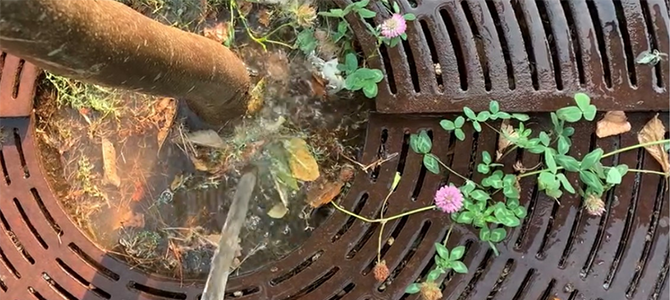
 Protect the urban forest and it will protect us: water thirsty trees
Protect the urban forest and it will protect us: water thirsty trees
With drought conditions forecasted to persist into fall months, the Urban Forestry team have ramped up efforts to hydrate the city’s 160,000 street trees using ground probes, 400-gallon water trucks and cannons, and are now asking residents and businesses to join the cause.
“Trees are incredibly important to the health of this city,” said Joe McLeod, Manager of Urban Forestry at the Vancouver Board of Parks and Recreation. “Besides adding moisture and purifying the air, they provide shade; an essential in protecting communities through extreme heat events due to climate change. Protect trees and they will protect us.”
For effective watering:
- Pour 3 to 5 gallons of water (approximately 2 buckets) around the drip line of a tree, (the outer edge where rain would naturally fall from the leaves overhead) twice a week.
- Water should be poured slowly to help the tree soak up moisture, and to prevent running-off the top soil layer.
- Alternatively, a hose can be used to slowly trickle water on the base of the tree for a few minutes.
- Watering is best done early in the morning or in the evening to avoid water loss from evaporation.
In line with current drinking water restrictions, trees are exempt from seasonal watering restrictions on residential and non-residential properties if watering is by hand or using drip irrigation. Sprinklers may be used to water trees between the hours of 5 am and 9 am on residential properties.
Trees most in need of water are those on boulevards, where younger and less densely populated trees do not reap the benefit of having established root systems or being surrounded by other greenery, which help retain moisture.
Adapting to climate change
Protecting and enhancing Vancouver’s urban forest is one of the city’s most important tools in building climate resilience.
Through a program of strategic tree planting, the Urban Forestry team is working towards increasing the canopy from 23% to 30% by 2050. Particular focus is dedicated to tree-deficient areas like Marpole and the Downtown Eastside, where tree cover is lower, to better support communities through increasingly hot summers.
Through these consistently hotter, drier summers, several varieties of trees are suffering more than others. Cherries and plums are still recovering from the 2021 heat dome, when the city’s forest was stressed to the brink. Urban Forestry staff are working with nurseries across the region to source species that handle drought better, and are planting climate adaptive species like beech, tupelo and oaks instead.
To report a tree in distress – one that has leaves that are light-coloured, small, or are hanging down unusually – call 311 or submit a request through the Van311 app.
Learn more about Vancouver's urban forest at vancouver.ca/urban-forestry